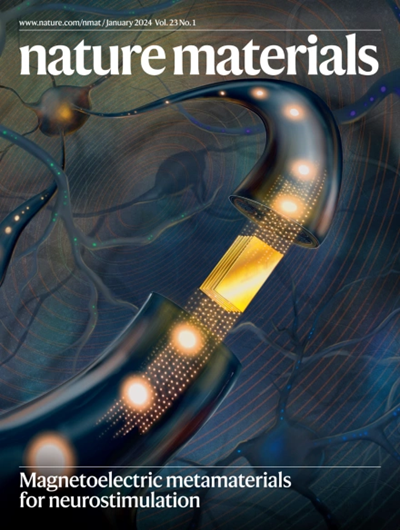反向钙钛矿太阳能电池中PCBM二聚体形成的抑制。
IF 38.5
1区 材料科学
Q1 CHEMISTRY, PHYSICAL
引用次数: 0
摘要
实现良好控制的电子选择层对于钙钛矿太阳能电池的器件可扩展性和性能至关重要。虽然苯基- c61 -丁酸甲酯(PCBM)是倒置钙钛矿太阳能电池中很有前途的电子选择材料,但其在环境应力下的二聚化加速了材料的降解,并使高质量PCBM层的生产复杂化,从而影响了设备的长期运行稳定性和大规模制造。本文研究了PCBM分子在钙钛矿表面的堆积,发现钙钛矿表面终止的可变性导致PCBM层的取向和分布不均匀,从而导致不良的二聚化。为了解决这个问题,我们开发了一种抑制PCBM二聚体形成的分子掺杂剂,在实验室规模的设备中实现了26.4%的认证效率,在1平方厘米的设备中实现了25.3%的认证效率。此外,根据iso L-2I协议,在85°C下老化1500小时后,这些器件保持了93%的初始功率转换效率。本文章由计算机程序翻译,如有差异,请以英文原文为准。
Suppression of PCBM dimer formation in inverted perovskite solar cells.
Achieving a well-controlled electron-selective layer is critical for the device scalability and performance of perovskite solar cells. While phenyl-C61-butyric acid methyl ester (PCBM) is a promising electron-selective material in inverted perovskite solar cells, its dimerization under environmental stress accelerates the material degradation and complicates producing high-quality PCBM layers, thereby compromising device long-term operational stability and scale-up fabrication. Here we investigated the PCBM molecular stacking on perovskite surfaces, finding that the variability in perovskite surface termination leads to orientation and distribution heterogeneity of the PCBM layer, resulting in undesirable dimerization. To address this, we developed a molecular dopant for suppressing PCBM dimer formation, achieving a certified efficiency of 26.4% in laboratory-scale devices and 25.3% in 1 cm2 devices. Furthermore, these devices maintained 93% of their initial power conversion efficiency after 1,500 h of ageing at 85 °C following the ISOS L-2I protocol.
求助全文
通过发布文献求助,成功后即可免费获取论文全文。
去求助
来源期刊

Nature Materials
工程技术-材料科学:综合
CiteScore
62.20
自引率
0.70%
发文量
221
审稿时长
3.2 months
期刊介绍:
Nature Materials is a monthly multi-disciplinary journal aimed at bringing together cutting-edge research across the entire spectrum of materials science and engineering. It covers all applied and fundamental aspects of the synthesis/processing, structure/composition, properties, and performance of materials. The journal recognizes that materials research has an increasing impact on classical disciplines such as physics, chemistry, and biology.
Additionally, Nature Materials provides a forum for the development of a common identity among materials scientists and encourages interdisciplinary collaboration. It takes an integrated and balanced approach to all areas of materials research, fostering the exchange of ideas between scientists involved in different disciplines.
Nature Materials is an invaluable resource for scientists in academia and industry who are active in discovering and developing materials and materials-related concepts. It offers engaging and informative papers of exceptional significance and quality, with the aim of influencing the development of society in the future.
 求助内容:
求助内容: 应助结果提醒方式:
应助结果提醒方式:


